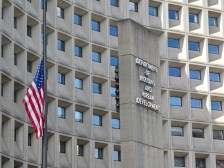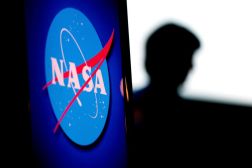NASA wants your help mapping Mars’ surface
NASA has released two tools to give the public a new way to explore the vast amount of the agency’s data tied to Mars exploration.
On the third anniversary of NASA’s Curiosity rover landing on Mars, the space agency unveiled Mars Trek — a free, Web-based mapping tool built off Mars-related data — and Experience Curiosity, a 3-D simulator that replicates the rover’s movement on Mars.
“At three years old, Curiosity already has had a rich and fascinating life. This new program lets the public experience some of the rover’s adventures first-hand,” said Jim Erickson, the project manager for the mission at NASA’s Jet Propulsion Laboratory.
Mars Trek allows users to explore a range of data sets — NASA has over 50 years’ worth of data on the Red Planet — generated from instruments aboard spacecraft orbiting Mars. The tool also allows people to measure surface features on Mars, with the option to print physical models of land sections using a 3-D printer.

A visual of Mars surface via Mars Trek. Users can plot, measure and search through various parts of maps made with NASA data. (NASA)
A team at NASA is already using the mapping tool to figure out landing zones for NASA’s Mars 2020 mission. It will also be used to examine and select various mission-related sites for the first human exploration mission to Mars in the 2030s.
“This tool has opened my eyes as to how we should first approach roaming on another world, and now the public can join in on the fun,” Jim Green, director of NASA’s Planetary Science Division in Washington, said in a release.
Experience Curiosity uses Mars-related data to simulate manipulation of the rover’s movement and cameras. “We’ve done a lot of heavy 3-D processing to make Experience Curiosity work in a browser. Anybody with access to the web can take a journey to Mars,” said Kevin Hussey, manager of the Visualization Applications and Development group at NASA JPL.
NASA often rolls out new features for the public as anniversaries tied to Mars missions occur. Last year, the agency released an update to its 3-D Spacecraft app that features a bunch of new content from the rover’s explorations.






